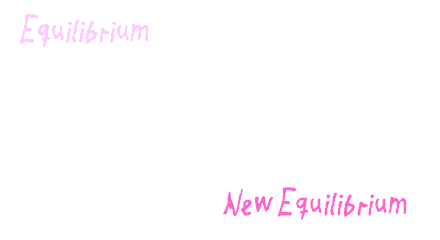

In Media Studies, it is important to tell the difference between narrative and story
Story = a sequence of events, known correctly as the plot
Narrative = the way those events are put together to be presented to an audience.
Therefore, when analysing a narrative we analyse the construction of the story ie the way it has been put together, not the story itself. You also need to consider what the story is about in its most basic terms, ie the theme (eg Love, war, winning).
All media texts have a narrative, whether they are a six hour TV miniseries or a one paragraph newspaper story or a glossy magazine photograph.
Analysing a narrative will involve the following:
This refers to all the aspects of narrative construction that involve technical decision making. Therefore anything to do with camera angles and movement, lighting, sound, props. shot framing and composition, design and layout and editing. What do each of the choices made tell you about what is going on - for instance, is a character shot from a high or low angle and how does that make you, the audience, feel about them? How are sound effects used to help you make sense of what is going on?
The use of language - written and spoken - and signs contained in graphics. We learn a lot about a narrative from what we are told in this way, but the best narratives show rather than tell, leaving the audience to draw their own conclusions.
These are the signs contained in the narrative that we decode as being significant and having meaning - for example a ragged coat worn by a character may mean that they are poor and possibly hungry. Think of them as clues that have to be followed, and different viewers/readers will follow clues in different ways.
Russian theorist, Tzvetan Todorov, suggests that all narratives follow a three part structure. They begin with equilibrium, where everything is balanced, progress as something comes along to disrupt that equilibrium, and finally reach a resolution, when equilibrium is restored.

This simple formula can be applied to virtually all narratives - it is a more formal way of thinking about the beginning, middle and end, and it takes into account Aristotle's theory that all drama is conflict ie there is a disequilibrium at the heart of every narrative.
Todorov came up with his theories after making a study of Russian folk tales. So too did Vladimir Propp, who came up with the theory that there are only a certain number of characters, who crop up in most narratives. It is easy to spot the hero and villain in most cases, but here are some others:
| Character Type | Role within narrative |
| Protagonist (or Hero) | Leads the narrative, is usually looking for something (a quest) or trying to solve something (a mystery). Does not have to be male :) |
| Antagonist (or Villain) | Gets in the protagonist's way |
| Heroine | Is usually some sort of prize or reward for the hero. NB if your hero is female, your heroine can be male :) |
| Father | An authority figure who offers a reward to the hero for completing their quest. That reward might be a prince or a princess or a cool new job |
| Helper | Helps the hero - often acts as a sidekick |
| Donor | Gives the hero something - a clue, a talisman, a special power - which helps them complete their quest |
| Mentor | Teaches and guides the hero |
As well as Aristotle deciding that 'all drama is conflict' in the 4th century BC, 20th century theorist Claude Levi-Strauss suggested that all narratives had to be driven forward by conflict that was cause by a series of opposing forces. he called this the theory of Binary Opposition, and it is used to describe how each main force in a narrative has its equal and opposite. Analysing a narrative means identifying these opposing forces
| light/dark | good/evil | noise/silence | youth/age |
| right/wrong | poverty/wealth | strength/weakness | inside/outside |
and understanding how the conflict between them will drive the narrative on until, finally, some sort of balance or resolution is achieved.
Yes, but don't forget you have been deconstructing narratives since before you could read. Think of all those bedtime stories - fairy tales are an excellent demonstration of the patterns and rules of narratives, and the main theorists developed their ideas from the study of fairy and folk tales across different cultures. All the theorists do is provide a formal framework for describing how you already understand the meaning and significance of a narrative.
Find a dramatic photograph which contains a narrative that you can deconstruct.
ie - the photograph has to contain or suggest
and you must be able to list some of the technical codes and symbolic codes.
You can try looking in
and the following websites:
Try to get as good quality an image as you can - you will be analysing the details so you need a high quality, high resolution image of a reasonable size. Tearing one out of a magazine is the easiest way to do this.